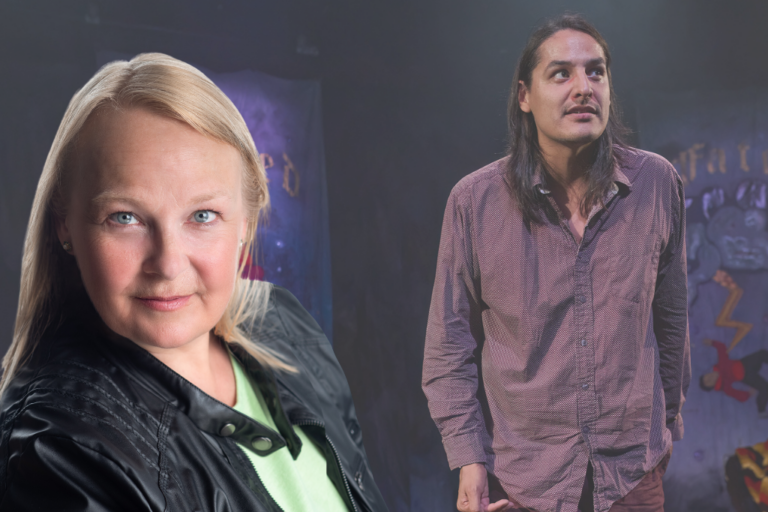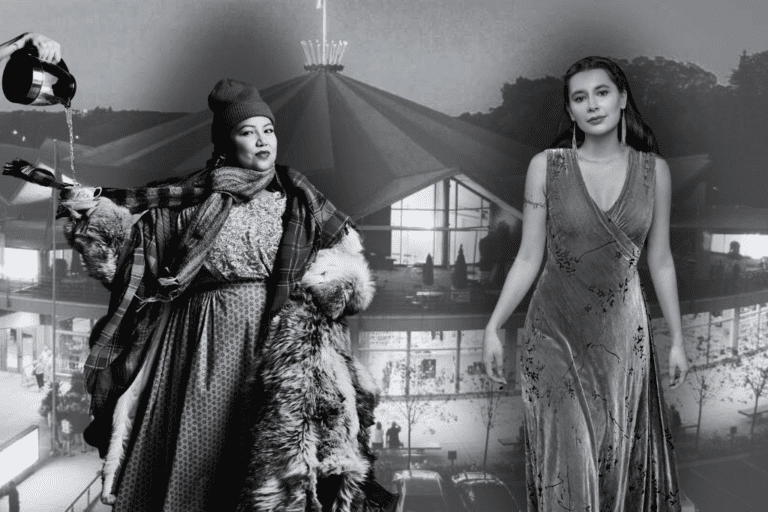Looking In to Reach Out: In Conversation with Sergio Blanco
Some might say it’s unusual for plays to star their writer. But in speaking with Sergio Blanco, playwright and protagonist of The Rage of Narcissus, however, one quickly realizes this play is not about him.
The Rage of Narcissus is an autofiction play, meaning it mixes both fiction and reality from an autobiographical viewpoint. Following the character of Sergio, the play is set entirely in a hotel room. Upon arrival, Sergio arranges a hookup with a man, then notices a strange stain on the hotel carpet, which he quickly realizes is a bloodstain. The audience then follows Sergio’s descent into obsession with what happened in the room through a dark exploration of the self.
“[Autofiction is] the crossing between a real story,… an experience lived by [the author], and a story fictitious, an experience invented by him,” explained Blanco in an interview. “It is my way of launching myself into fields of fiction.”
And although playwriting is all about storytelling and creativity, Blanco also uses it as a way to connect to himself. “Every time I start to write a new autofiction is like starting to reinvent myself,” he said. “Somehow in each new work I am recreating myself. It is so I can experience different and infinite possibilities.”
Autofiction opposes the binary that something has to be true or false.
Previous reviews of The Rage of Narcissus, which premiered in 2015 in Montevideo, Uruguay, said it was unclear whether the play was really about Blanco or not.
“[It] is very seductive to me,” said Blanco, adding that truth and fiction merge in his autofiction writing process, making it difficult to separate reality from story.
“This is how episodes linked to my life begin to appear [in my writing] that are… as true as they are false.”
Although this conflation between life and art often happens unintentionally, writing autofiction has a natural connection to myths for Blanco. Working with myths is like “working with a story that already contains in itself the essence of what I want to say,” he said, which, for him, enhances the creativity of the writing process and the connection between writer and audience. “There is no firm distinction between what is real and what is unreal,” he continued. “Autofiction opposes the binary that something has to be true or false.”
Along with opening up his own creativity and fluidity in storytelling, Blanco uses autofiction to open up to others. “Autofiction is not an egotistical confinement in oneself as is often mistakenly believed,” he explained. For Blanco, it is actually the opposite of ego-boosting. Starting with a personal experience, Blanco said he develops his own lived experiences “to go beyond that self” and rather “go towards others and thus try to connect with [their] stories.”
Marcio Beauclair, director of the Canadian premiere of The Rage of Narcissus, embodies Blanco’s autofiction approach. In an interview, Blanco described how when any of his works are produced in a new country, he encourages bringing that locale’s culture into the production. Beauclair, working with Matthew Romantini (who plays Sergio in the Toronto production), strove to include Canadian culture — and Toronto specifically — in the show. The play is set in Toronto for this production, and local audience members will notice familiar places and names.
“I always want the same thing,” Blanco said. “That the story we are going to tell together with the whole team is something that can reach the public… that it excites them and [they] experience [it] collectively. Because that’s the most fascinating thing about theatre: that it’s something collective.”
Because The Rage of Narcissus has been performed in so many locations across the globe, Blanco encourages artistic freedom with local directors, to make it both their own and suited to the culture and people of the city in which it’s being performed.
“I always tell the directors… to transform it,” he said of the text. “This is quite a challenge,” he continued, saying it often tempts theatre workers in different countries to work with the piece. Expandido Theatre Group, the producers of Toronto’s production, are striving to incorporate a sense of Toronto culture within the performance, and have set up an art exhibition by Renato Baldin, one of the co-founders of Expandido.
Beauclair also plans to take Blanco’s autofiction to new levels with an additional production of the play scheduled after its run at Theatre Passe Muraille. Since the play is set entirely in a hotel room, Beauclair has staged another version in an actual hotel suite, making it site-specific. “There is a line in Sergio’s play that says that everything happened in this room, this exact room,” explained Beauclair. “Nothing is more autofictional than stag[ing] The Rage of Narcissus in an actual hotel room here in Toronto.”
Beauclair plans to bring in another form of self into the Toronto production through his and Expandido’s queerness. The entire Expandido team is queer, as is Romantini, playing Sergio. In his direction, Beauclair includes moments from Romantini’s real life, changing “issues related to Gabriel [Calderón, the actor who premiered the play in Montevideo in 2015], and added issues related… to our life in Toronto.” There is also a song featured in the Toronto production by Ceréna, a local trans Latina singer, further contributing to the city’s culture, the autofiction style of layering selves, and the adaptation to include queerness as a central ‘self’ and character.
“We wanted us to be reflected in the story as well,” said Beauclair.
And ultimately, that is what Blanco wants as well. “For me, the most important thing in terms of impact is that each viewer finds in this story the message that they think is relevant,” he said.
“I like my works to remain open so that everyone can find their own message… [and] the messages of The Rage of Narcissus can be infinite.”
The Rage of Narcissus runs at Theatre Passe Muraille through May 28. Tickets are available here.













Comments